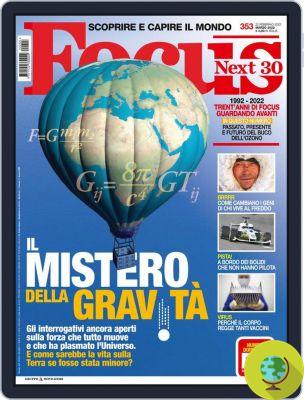
The results of the census of the seas were presented this morning in London with which the scientists of the Census of Marine Life managed to catalog over 230 thousand species of marine animals and plants.
He is about to end up run over, his mother saves him
The results of the census of the seas were presented this morning in London with which the scientists of the Census of Marine Life were able to catalog over 230 thousand species of marine animals and plants.
The inventory of all the inhabitants of the oceans of the world, published for the first time in recent months in the magazine Plos One, is the result of a mammoth work by 360 scientists lasted 10 years with the aim of providing a complete mapping of marine biodiversity although, it must be said, it still represents one still partial cataloging because there are many species still unknown.
This census of the seas, however, represents one historical collection of summary documents and unprecedented insights that can provide a reference to measure the evolution of species over time in the future and guide the next exploration expeditions into the abyss.
As already reported in our previous article dedicated to the census of the seas, "there are over 230 thousand species that populate the oceans of the Earth of which only a tenth cataloged. Australian and Japanese waters with nearly 33.000 life forms that have achieved species status with their respective scientific name (such as Carcharodon carcharia, aka the great white shark) were by far the richest in biodiversity. Followed by the seas of China (22 thousand), our Mediterranean Sea (17 thousand) and the Gulf of Mexico with 15 thousand species (at least before the black tide) ".
With regard to the typology, the various species were divided by scientists as follows:
- 19% of crustaceans (crabs, lobsters, shrimps, shrimps, barnacles, etc ...)
- 17% clams (squid, octopus, clams, snails)
- 12% fish (including sharks)
- 10% protozoa (unicellular microorganisms)
- 10% of seaweed and other similar plant organisms
- 7% Annelids (segmented worms)
- 5% Cnidaria (including sea anemones, corals and jellyfish)
- 3% Platelminti (including flat worms)
- 3% Echinoderms (including starfish, brittle stars, sea urchins, sand and sea dollar cucumbers)
- 3% Poriferi (including sponges)
- 2% Bryozoa ('moss animals')
- 1% tunicates (including so-called sea sketches)
The remainder was classified as "other invertebrates (5%)"and "other vertebrates (2%)”Category, the latter in which they were also included whales, sea lions, seals, sea birds, turtles and walruses which, paradoxically, represent the best known marine animals, but which constitute a very small part of the marine biodiversity.
Among the data that emerge from the work of the Census, those concerning the Mediterranean Sea which, despite being among the richest in biodiversity, second only to the seas of Japan and Austrolia, and with over 7% of species not found elsewhere (percentage exceeded only by Antarctica with 15%), it turned out the sea more at risk of losing its assets, even more than the Gulf of Mexico, due to the presence of man and gods climate changes.
Our sea, in fact, is the part of the world with the most commercial marine routes and in the Adriatic alone there are 100 wells for the extraction of methane. Add to this the intensive fishing and the effects of global warming which, altering the ecosystem, heavily undermine the more than 17.000 species found.
Read the entire summary of the census (In English)


























